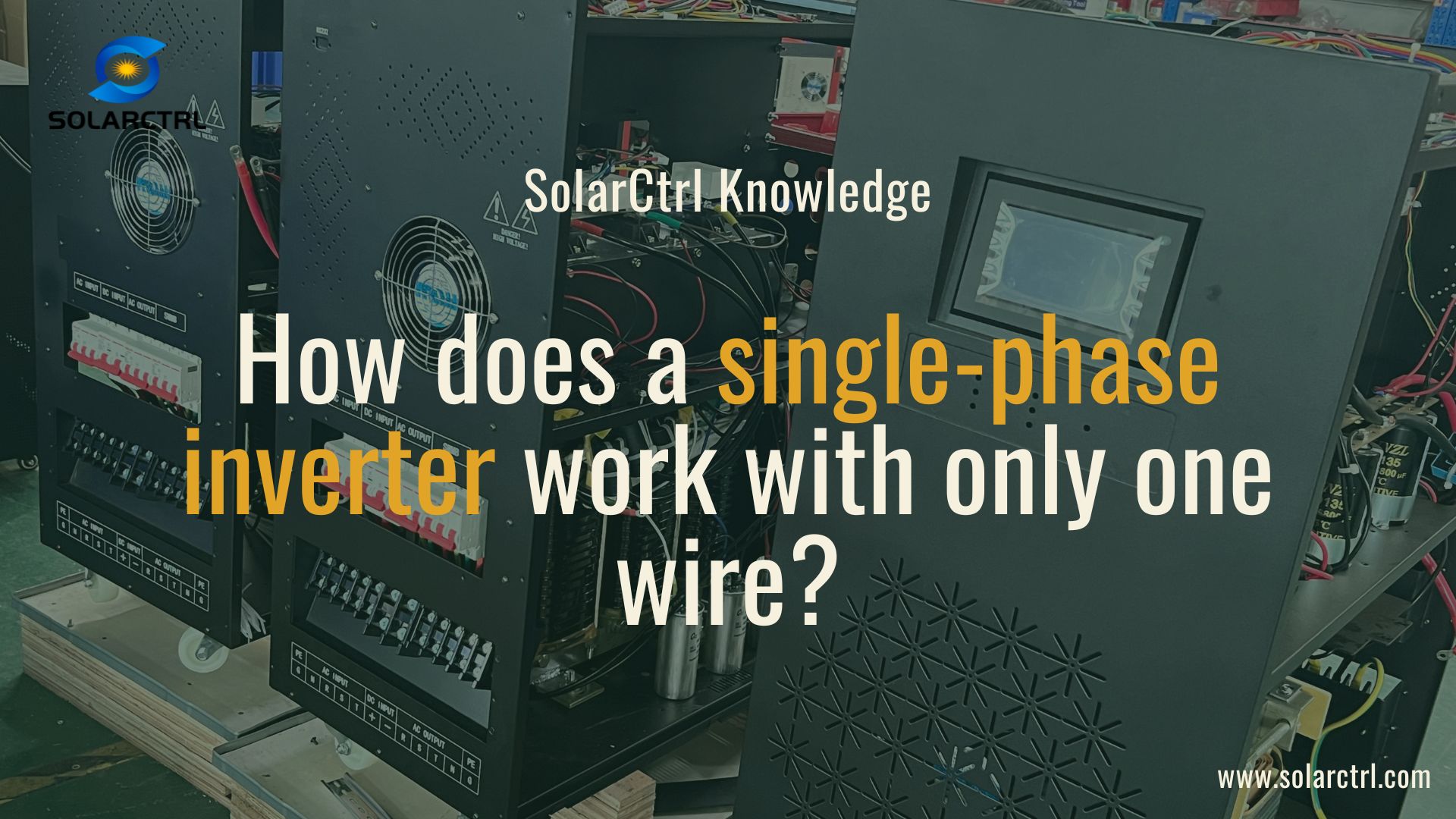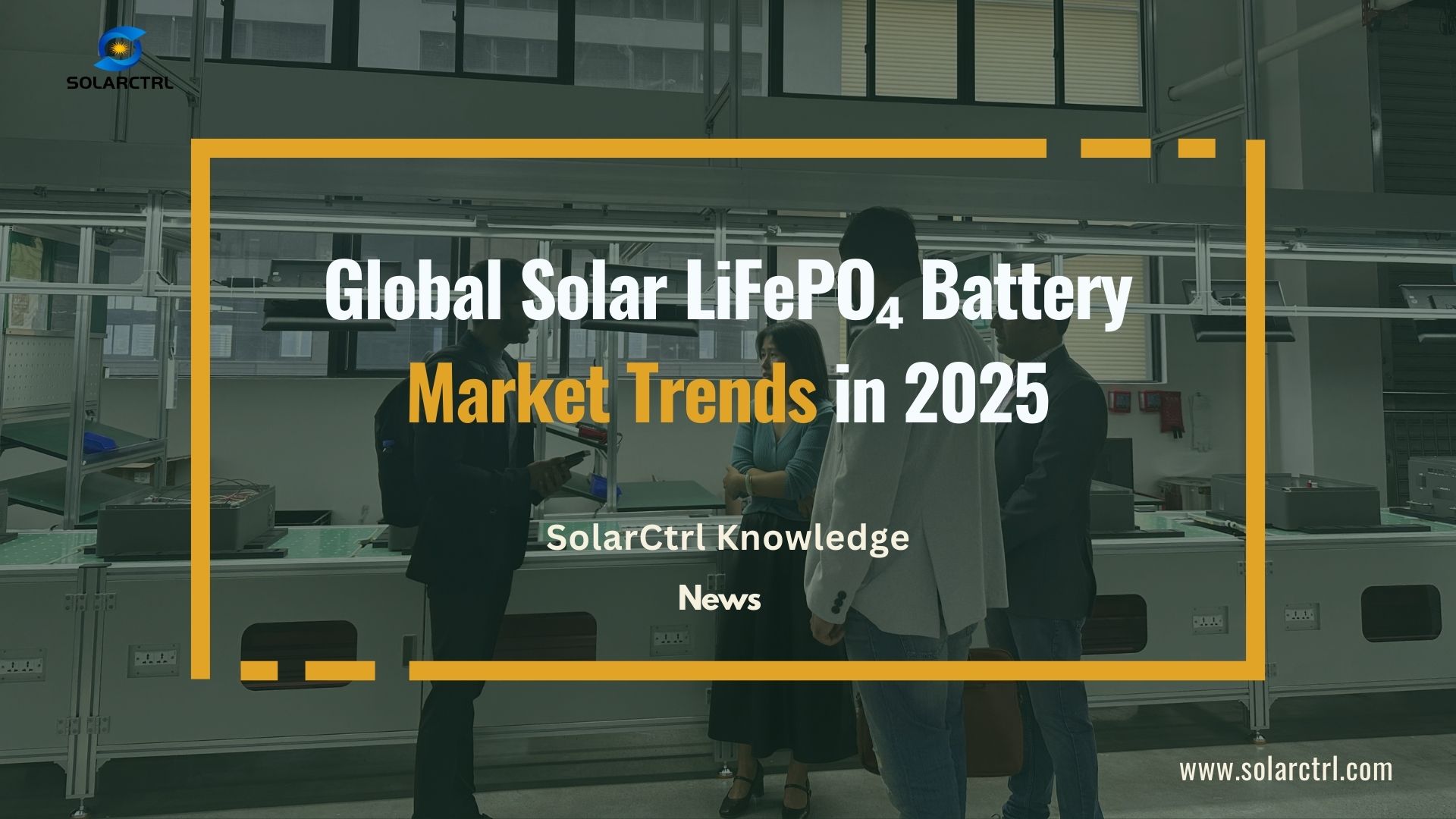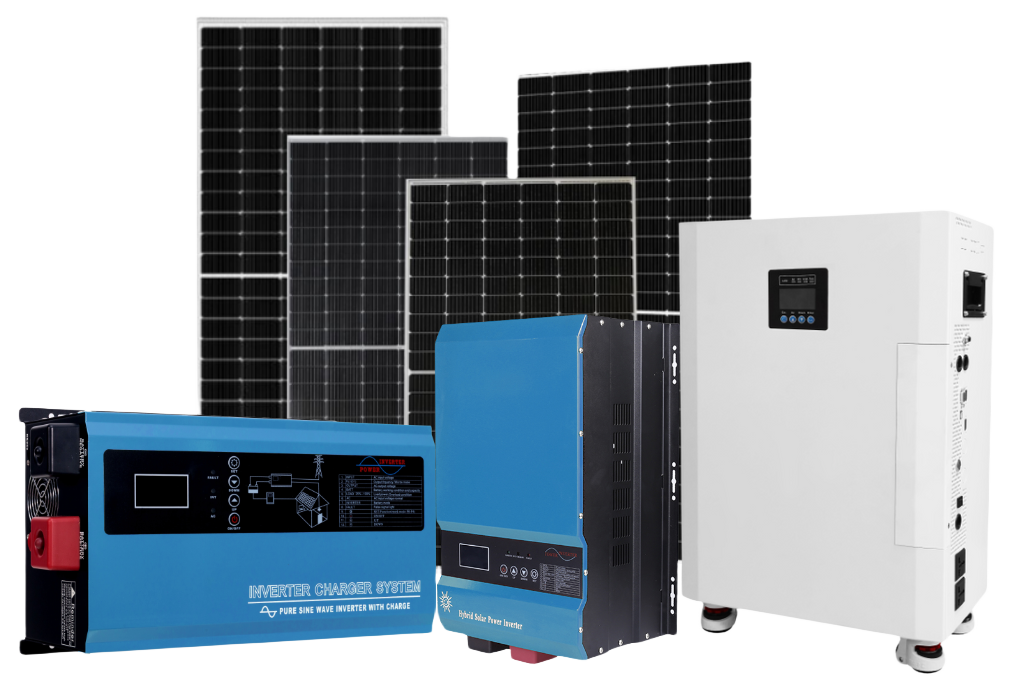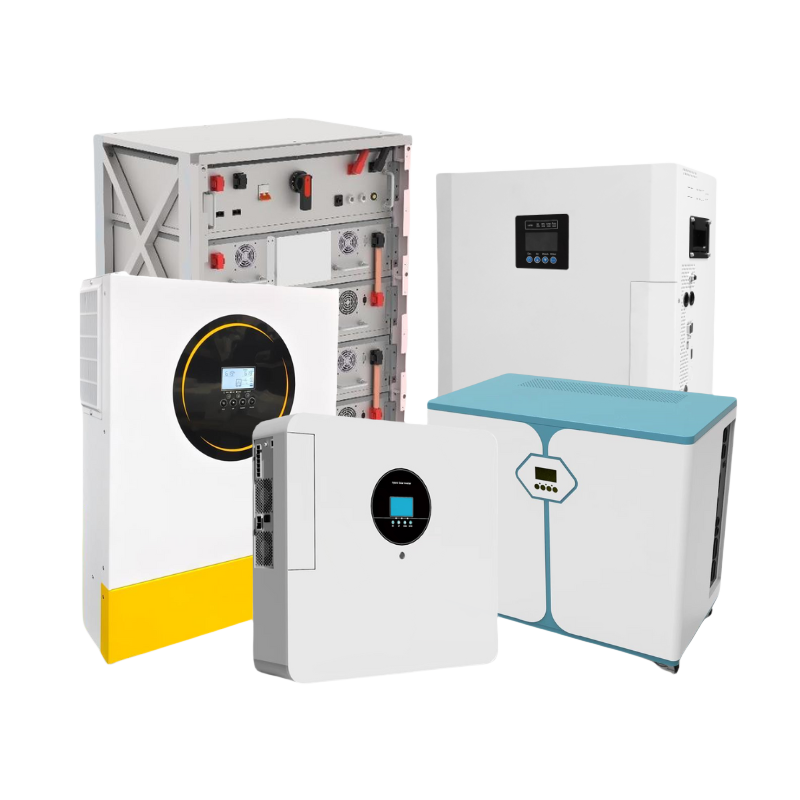A single-phase inverter works by converting direct current (DC) from a power source, such as solar panels, into alternating current (AC) using pulse-width modulation (PWM). This involves chopping the DC power into a series of pulses, which are then adjusted to control the power delivered to the grid. The output involves one live wire, with the main neutral line acting as the return path.
Understanding this basic operation helps in grasping more complex electrical systems and their applications.
The Basics of Single-Phase Inverters
What is a Single-Phase Inverter?
A single-phase inverter is an essential component in residential solar energy systems. Its primary function is to convert the direct current (DC) generated by solar panels into alternating current (AC), which is the form of electricity used by most household appliances. This conversion is critical because solar panels produce DC electricity, while home appliances and the electrical grid operate on AC.
Key Components
- DC Input: This component receives the DC power generated by the solar panels. It is designed to handle varying input levels, ensuring stable conversion regardless of fluctuations in sunlight.
- Power Electronics: These include transistors, diodes, and capacitors, which work together to switch the DC input rapidly, creating a pulsed DC. This pulsed DC is then transformed into a smooth AC output through filtering processes.
- AC Output: The AC output is where the converted electricity is supplied to the home. It is designed to match the voltage and frequency of the household electrical system, ensuring compatibility with all home appliances.
- Control Unit: The control unit oversees the entire operation of the inverter. It ensures efficient conversion by optimizing the switching of power electronics and protecting the system from faults and irregularities. This includes monitoring performance, managing energy flows, and providing diagnostic information to maintain system health.
How Single-Phase Inverters Work
Conversion Process
Single-phase inverters operate by transforming the direct current (DC) from solar panels into alternating current (AC) suitable for household use. The process begins with electronic components such as MOSFETs (Metal-Oxide-Semiconductor Field-Effect Transistors) and capacitors. MOSFETs act as switches that rapidly toggle the DC input, creating a pulsed waveform.
This high-speed switching converts the steady DC into a form that resembles AC, known as pulsed DC. The role of capacitors in this stage is to smooth out the transitions, reducing ripples and ensuring the pulsed DC is more consistent.
After this initial conversion, the pulsed DC undergoes filtering to eliminate any remaining irregularities, producing a smooth and stable AC output.
Pulse Width Modulation (PWM)
One of the key techniques used in single-phase inverters is Pulse Width Modulation (PWM). PWM is a method that controls the inverter’s output voltage and frequency by varying the width of the pulses in the pulsed DC. By adjusting these pulse widths, the inverter can precisely regulate the AC output to match the required grid standards.
This modulation ensures that the output voltage remains stable and the frequency is consistent with household electrical systems, typically 50 or 60 Hz depending on the region.
PWM is crucial for maintaining the efficiency and reliability of the inverter, as it allows for fine-tuned control over the energy conversion process, ensuring that the AC output is clean and suitable for powering home appliances.

Understanding the “One Wire” Concept
Grounding and Neutral
In residential electrical systems, the concept of using only “one wire” can be misleading. Typically, an AC circuit consists of multiple wires, including the line (hot) wire, neutral wire, and ground wire.
The neutral wire plays a crucial role by providing a return path for the electrical current, completing the circuit. Grounding is an additional safety measure, ensuring any stray electricity is safely directed away, preventing electric shocks and equipment damage.
While it might appear that only one wire is in use, the neutral and ground wires are essential components that work in the background to ensure the system’s functionality and safety.
How It Works
1. Line Wire (Hot)
The line wire carries the electrical current from the inverter to the electrical load (e.g., household appliances). This wire is the main pathway for power delivery and is typically insulated and colored differently (often black or red) to distinguish it from other wires.
2. Neutral Wire
The neutral wire completes the circuit by providing a return path for the current back to the power source or the electrical panel. It is usually white or gray and is connected to the ground at the main electrical panel, ensuring that the circuit is balanced and functioning correctly.
3. Ground Wire
The ground wire offers a safety path for electricity in case of a fault. It is typically green or bare copper and connects all the grounded parts of the electrical system, including the inverter, to the earth. In the event of a short circuit or electrical fault, the ground wire directs the excess electricity away from the system, preventing potential hazards like electric shocks or fires.
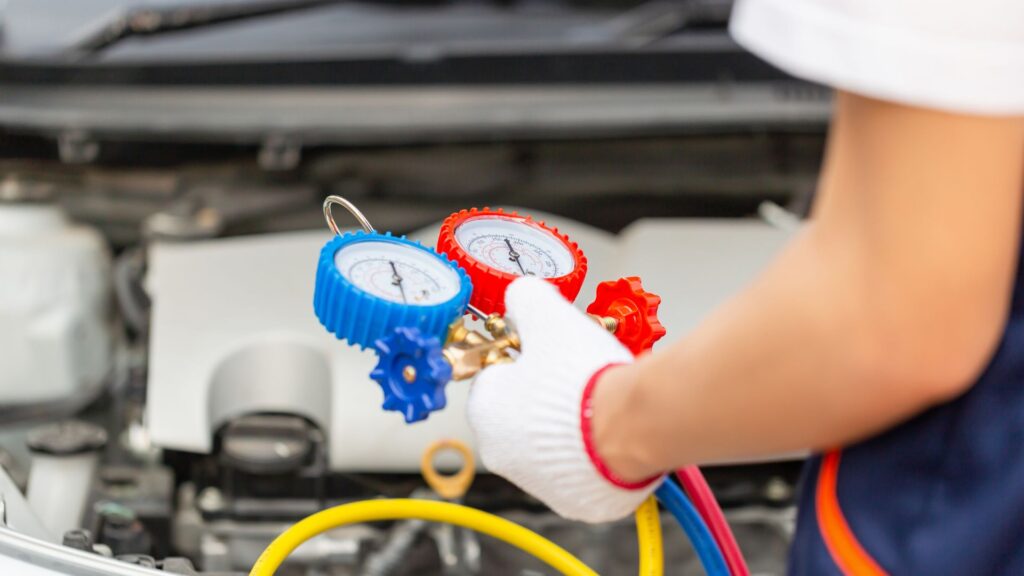
Integration into Home Electrical Systems
Grid-Tied Systems
In a grid-tied solar system, the single-phase inverter is a pivotal component that links the solar power setup to both the home’s electrical panel and the utility grid. The inverter’s primary function is to convert the DC power generated by the solar panels into AC power that matches the grid’s frequency and voltage. This synchronization ensures that the solar-generated electricity can seamlessly integrate with the grid supply.
Once converted, the AC power is distributed through the home’s electrical system to power appliances and devices. Any excess electricity generated by the solar panels can be fed back into the utility grid, often allowing homeowners to receive credits or compensation through net metering.
This setup ensures a continuous supply of electricity, as any shortfall from the solar panels is automatically supplemented by the grid.
Off-Grid Systems
Off-grid solar systems operate independently of the utility grid, relying entirely on solar panels and battery storage for power. In these systems, the single-phase inverter connects directly to a battery bank, which stores the DC power generated by the solar panels. The inverter then converts this stored DC power into AC power for home use.
This conversion process allows the stored solar energy to be utilized by household appliances, maintaining a steady supply of electricity even during periods without sunlight, such as at night or during cloudy weather.
Similar to grid-tied systems, off-grid inverters also use neutral and ground wires to complete the electrical circuit, ensuring safety and functionality. These systems are ideal for remote locations where connecting to the utility grid is impractical or impossible, providing reliable and sustainable power solutions.
Practical Applications and Examples
Residential Use
Single-phase inverters are particularly well-suited for residential use, as most homes operate on single-phase power. These inverters provide ample power for typical household appliances, such as refrigerators, televisions, and lighting. They are designed to integrate seamlessly with existing home electrical infrastructure, making the transition to solar energy smooth and straightforward.
Simplified Wiring
In installations where simplicity and cost-effectiveness are priorities, single-phase inverters shine. Utilizing a single wire along with a common ground or neutral significantly streamlines the wiring process.
This approach not only reduces installation time but also cuts down on material costs, while still ensuring the system’s efficiency and safety. The straightforward wiring setup minimizes potential errors and makes maintenance easier, providing a reliable and effective solution for residential solar power systems.

Advantages and Limitations
Advantages
- Simplicity: Single-phase inverters are easy to install and operate, making them accessible even for homeowners with basic technical knowledge. Their straightforward design minimizes complications during installation.
- Compatibility: These inverters are designed to work seamlessly with standard residential electrical systems, ensuring a smooth integration with existing home wiring and appliances.
- Cost-Effectiveness: Single-phase inverters are generally less expensive than their three-phase counterparts, making them an economical choice for small to medium-sized solar installations. This cost advantage makes solar energy more accessible to a wider range of homeowners.
Limitations
- Power Capacity: Single-phase inverters are ideal for lower power demands typical of residential settings. However, they may not meet the needs of high-power applications, which require the enhanced capacity of three-phase inverters.
- Efficiency: While single-phase inverters are efficient for residential use, they may not achieve the same level of efficiency as three-phase systems in large-scale power conversions. This can make them less suitable for industrial or large commercial solar projects where maximum efficiency is crucial.
Maintenance and Troubleshooting
Regular Checks
Maintaining a single-phase inverter requires routine inspections to confirm that all electrical connections are secure and that the system is functioning efficiently. During these checks, look for signs of wear, corrosion, or damage, especially in the wiring and connectors. Regularly clean any dust or debris that could obstruct the inverter’s ventilation system.
Common Issues
- Overheating: Ensure that the inverter has adequate ventilation. Overheating can be prevented by installing the inverter in a cool, shaded area and ensuring that the cooling fans and vents are not blocked.
- Electrical Noise: Proper grounding is essential to minimize electrical noise and interference. Check all grounding connections to ensure they are intact and secure.
- Performance Drops: Regularly monitor the inverter’s output and performance using its control unit or dedicated monitoring software. Sudden drops in performance may indicate underlying issues that require immediate attention. If performance issues are detected, check the system for any faults and consult the user manual or a professional technician for further troubleshooting steps.

Conclusion
Single-phase inverters play a vital role in converting solar energy for home use, and understanding their operation with a single wire setup is crucial for effective implementation.
By leveraging common ground or neutral wires, these inverters can efficiently complete electrical circuits and integrate seamlessly into residential power systems. With proper installation and maintenance, single-phase inverters offer a reliable and cost-effective solution for harnessing solar energy.
In summary, while the concept of operating with a single wire might seem perplexing at first, it’s the strategic use of grounding and neutral wires that makes this possible. This setup not only simplifies the installation process but also ensures the inverter functions efficiently within the home’s electrical framework.
FAQs
Q1: Do Single-Phase AC Circuits Have Two Wires?
In a single-phase AC power system, there are typically two wires that carry electrical current: the phase wire (also known as the live wire) and the neutral wire. The live wire delivers current to the load, while the neutral wire returns it to its source. This two-wire system ensures a complete circuit and safe operation of electrical devices.
Q2: Can Two Inverters Share Neutral?
It’s generally not advisable for two inverters to share a neutral wire. Doing so can cause sparks, potential fire hazards, and even electric shocks. Many 240V grid-tie inverters do not have a neutral wire on the output, especially when connecting to a standard single-phase household with a three-wire setup. Safety protocols must be strictly followed to avoid any dangerous incidents.
Q3: What are Split Phase Inverters and Their Applications?
Split phase inverters are designed to provide 120V/240V AC power by splitting a single-phase power source into two equal parts. These inverters are commonly used in residential settings where appliances require both 120V and 240V. They offer more power and stable voltage regulation compared to single-phase inverters, making them ideal for higher load applications.

